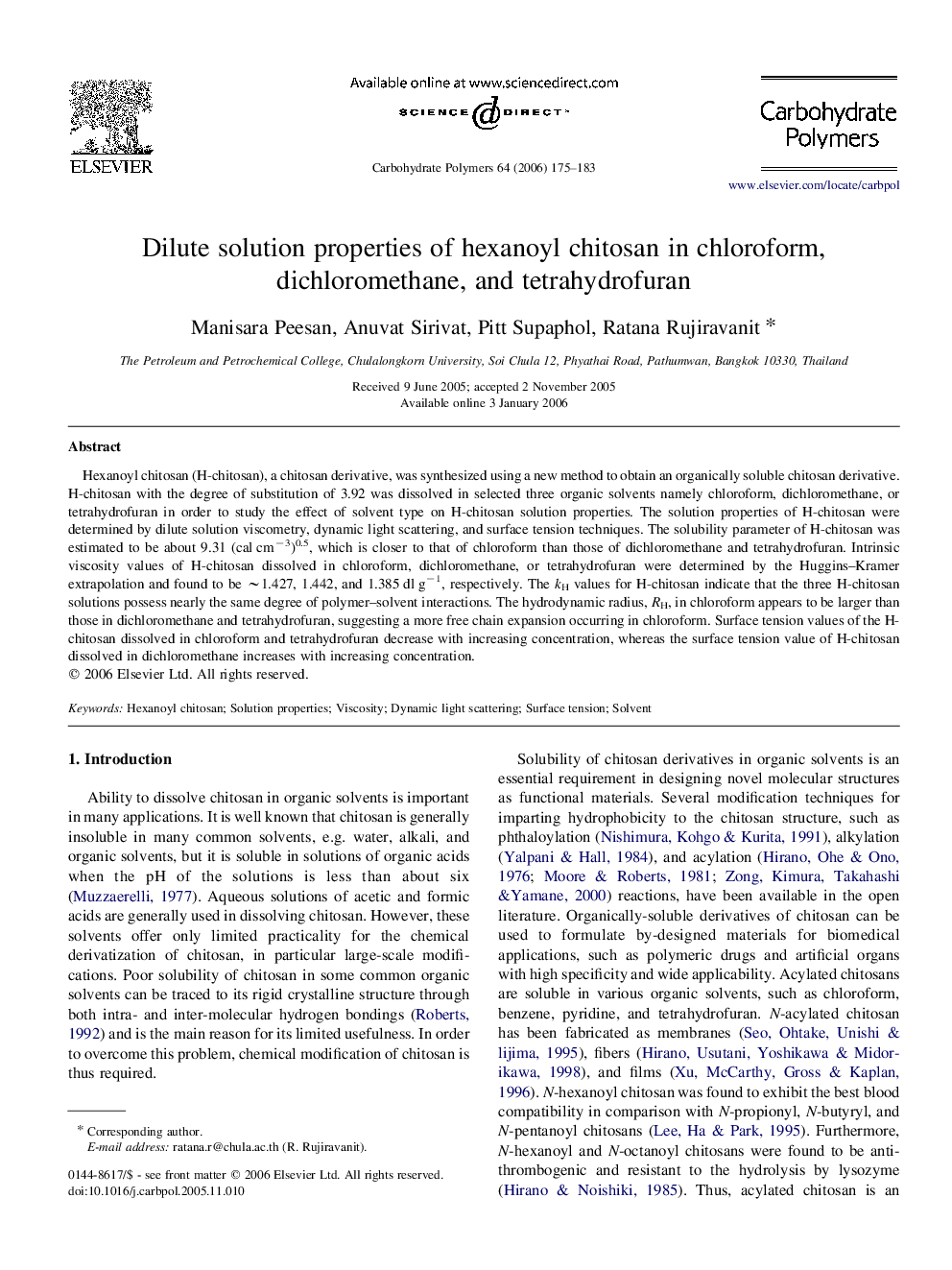| Article ID | Journal | Published Year | Pages | File Type |
|---|---|---|---|---|
| 1385763 | Carbohydrate Polymers | 2006 | 9 Pages |
Hexanoyl chitosan (H-chitosan), a chitosan derivative, was synthesized using a new method to obtain an organically soluble chitosan derivative. H-chitosan with the degree of substitution of 3.92 was dissolved in selected three organic solvents namely chloroform, dichloromethane, or tetrahydrofuran in order to study the effect of solvent type on H-chitosan solution properties. The solution properties of H-chitosan were determined by dilute solution viscometry, dynamic light scattering, and surface tension techniques. The solubility parameter of H-chitosan was estimated to be about 9.31 (cal cm−3)0.5, which is closer to that of chloroform than those of dichloromethane and tetrahydrofuran. Intrinsic viscosity values of H-chitosan dissolved in chloroform, dichloromethane, or tetrahydrofuran were determined by the Huggins–Kramer extrapolation and found to be ∼1.427, 1.442, and 1.385 dl g−1, respectively. The kH values for H-chitosan indicate that the three H-chitosan solutions possess nearly the same degree of polymer–solvent interactions. The hydrodynamic radius, RH, in chloroform appears to be larger than those in dichloromethane and tetrahydrofuran, suggesting a more free chain expansion occurring in chloroform. Surface tension values of the H-chitosan dissolved in chloroform and tetrahydrofuran decrease with increasing concentration, whereas the surface tension value of H-chitosan dissolved in dichloromethane increases with increasing concentration.
